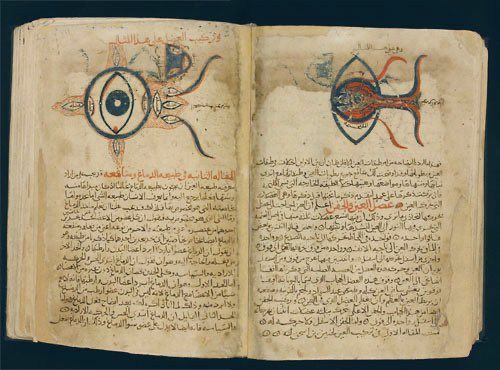Yogyakarta, Depostjogja
This 1000-year-old book has the original title in Arabic, namely Al-Manadhir but was later translated into Latin into Book of Optics. This is the most influential science book in the history of science in Europe, even the whole world. In the field of optics without this book, there is probably no such thing as a camera now.
Interestingly this book is more than 1000 years old, but still relevant today. Who is the author of this book, westerners call it Alhazen, the Latin name for al-Haytham, he is Ibn al-Haytham, a Muslim scientist in the 11th century (965-1040). Where at that time Islam was in its golden age, western people called it the Islamic golden age.
Maybe for you, Ibn al-Haytham is a nobody even many Muslims do not know him. But in Europe, he is very famous equated with Galileo and Newton because he is the founder of the science of light so that Ibn al-Haytham is called the Fathers of optics.
One of the most revolutionary discoveries of Ibn al-Haytham from the world's scientific view at that time was how he explained how our eyes work. Before his existence, Greek scientists such as Plato and ifrit believed that the eye emits a kind of light towards the object to be able to see it, then Ibn al-Haytham refuted that it is the eye that catches the reflection of light so that we can see even it was he who mapped the parts of the eye that functions to regulate the entry of light such as the iris, pupil, cornea, and retina.
READ ALSO: Rahasia Diet Yang Sehat Bagi Penderita Sakit Maag, Apa Saja Yang Harus Dilakukan ? Simak Disini
His findings This is not just a theory, Ibn al-Haytham proved it by experimentation, even his experiments which could be considered quite simple when it became the basis for the invention of today's camera which at that time was called the camera obscura.
Did you know that the word camera comes from Latin which means room while Obscura means dark, so camera obscura means dark room?
The name is because Ibn al-Haytham conducted his experiments in a dark room when he was imprisoned. He was imprisoned because the Egyptian rulers had summoned him to overcome the flood of the Nile, but his efforts were deemed a failure and the king was angry, and imprisoned him, but while in prison this was a historic moment for Ibn al-Haytham and the development of the world of modern science, one of which was the invention of the camera obscura.
Ibn al-Haytham not only explained how the eye works but the nature of light itself. He was the first to prove that light travels in a straight line so that he could explain the reflection of mirrors, refraction of light, and other phenomena. And this is also the basis for the invention of all technologies involving light such as optical cables, lasers, satellite communications to particle accelerators.
That is why al-Haytham's book is very important for the development of modern science. What you learn in school in optics such as mirrors, refraction of light, lenses, how cameras work, telescopes, microscopes all come from this 1000-year-old book. But unfortunately, this book is never mentioned in school books.












